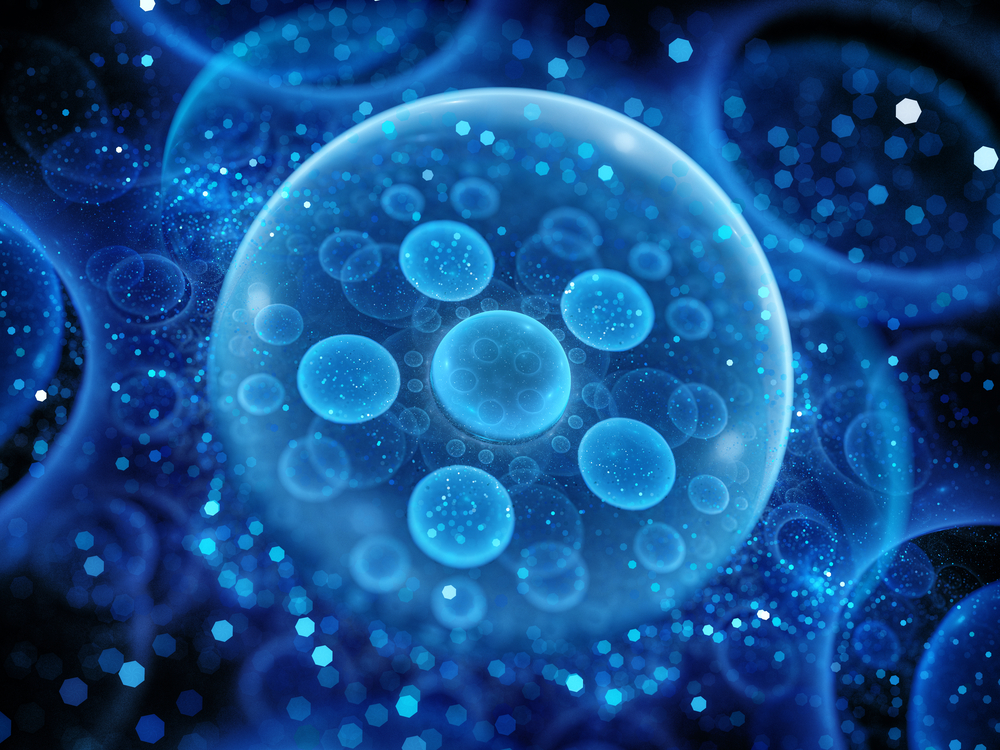
Like a bit of froth on the crest of an ocean wave, our observable universe may be nothing more than a sliver sitting within the edge of a bubble that's constantly expanding into a higher dimension.
While this mind-boggling idea might sound like something out of a physicist's fever dream, it is in fact a new endeavor to reconcile the mathematics of string theory with the reality of dark energy, a mysterious, all-pervading cosmic force that acts in opposition to gravity.
String theory is an attempt to unite the two pillars of 20th century physics — quantum mechanics and gravity — by positing that all particles are one-dimensional strings whose vibrations determine properties such as mass and charge. The theory has been described as mathematically beautiful, and for a long time has been one of the leading contenders for what scientists call a Theory of Everything, meaning a framework to explain all physics, popularized in books like Brian Greene's The Elegant Universe (Norton, 1999). [Big Bang to Civilization: 10 Amazing Origin Events]
But string theorists have lately been lost in a warren of their own speculations. Many versions of string theory require that reality consist of 10 or more dimensions — the three of space and one of time we normally experience, plus many others that are rolled up into an extremely tight point. Exactly how those extra dimensions are configured determines the characteristics of the universe we perceive.
In the early 2000s, researchers realized that string theory allowed for as many as 10^500 (that's the number 1 followed by 500 zeroes) unique universes to exist, creating a multiverse landscape in which our particular universe was just a tiny subsection, as Live Science previously reported. But string theory equations also mostly produced hypothetical universes lacking in dark energy, which astronomers discovered in the 1990s and which is currently accelerating the expansion of the cosmos.
Earlier this year, researchers dealt a blow to string theory by suggesting that not a single one of the nearly countless universes it describes actually contains dark energy as we know it . "It is increasingly clear that the models proposed so far in string theory to describe dark energy suffers from mathematical problems," Ulf Danielsson, co-author of a new paper published Dec. 27 in the journal Physical Review Letters and a theoretical physicist at Uppsala University in Sweden, told Live Science.
The basic problem, Danielsson said, is that the equations governing string theory say that any universe with our version of dark energy in it should quickly decay away and vanish. "Our idea is to turn this problem into a virtue," he said.
Breaking space news, the latest updates on rocket launches, skywatching events and more!
Along with his colleagues, he constructed a model in which the process causing these dark-energy-permeated universes to decay actually drives the inflation of bubbles made from many dimensions. We live within the boundary of one of these expanding bubbles and "dark energy is … induced in a subtle way through the interplay between the bubble walls on which we are living and the higher dimensions," Danielsson wrote in a blog post describing the new theory.
The Big Bang, when our cosmos was born, then becomes the moment when this bubble began expanding, according to Danielsson. Particles in our universe are simply the end points of strings extending out into extra dimensions. Danielsson and his colleagues are interested in checking if their model is compatible with other known aspects of physics. And the hypothesis might serve to help physicists make observable predictions about the early universe and black holes, Danielsson said. [Stephen Hawking's Most Far-Out Ideas About Black Holes]
But other researchers aren't buying it.
"This is a math-fiction that has zero experimental evidence speaking for it," Sabine Hossenfelder, a physicist at the Frankfurt Institute for Advanced Studies in Germany, told Live Science.
Hossenfelder has been critical of much of the latest pontificating in fundamental physics, and published a book last year called Lost in Math: How Beauty Leads Physics Astray (Basic Books, 2018). "String theorists propose a seemingly endless amount of mathematical constructions that have no known relationship to observation," she said.
But Danielsson does not think that string theory will be forever untestable, and that the current debates surrounding it are already providing some checks on the theory. "If it turns out that string theory cannot yield dark energy of the kind we observe, then string theory is not only tested, it is proven wrong," he said.
Originally published on Live Science.

Adam Mann is a journalist specializing in astronomy and physics stories. His work has appeared in the New York Times, New Yorker, Wall Street Journal, Wired, Nature, Science, and many other places. He lives in Oakland, California, where he enjoys riding his bike. Follow him on Twitter @adamspacemann or visit his website at https://www.adamspacemann.com/.

